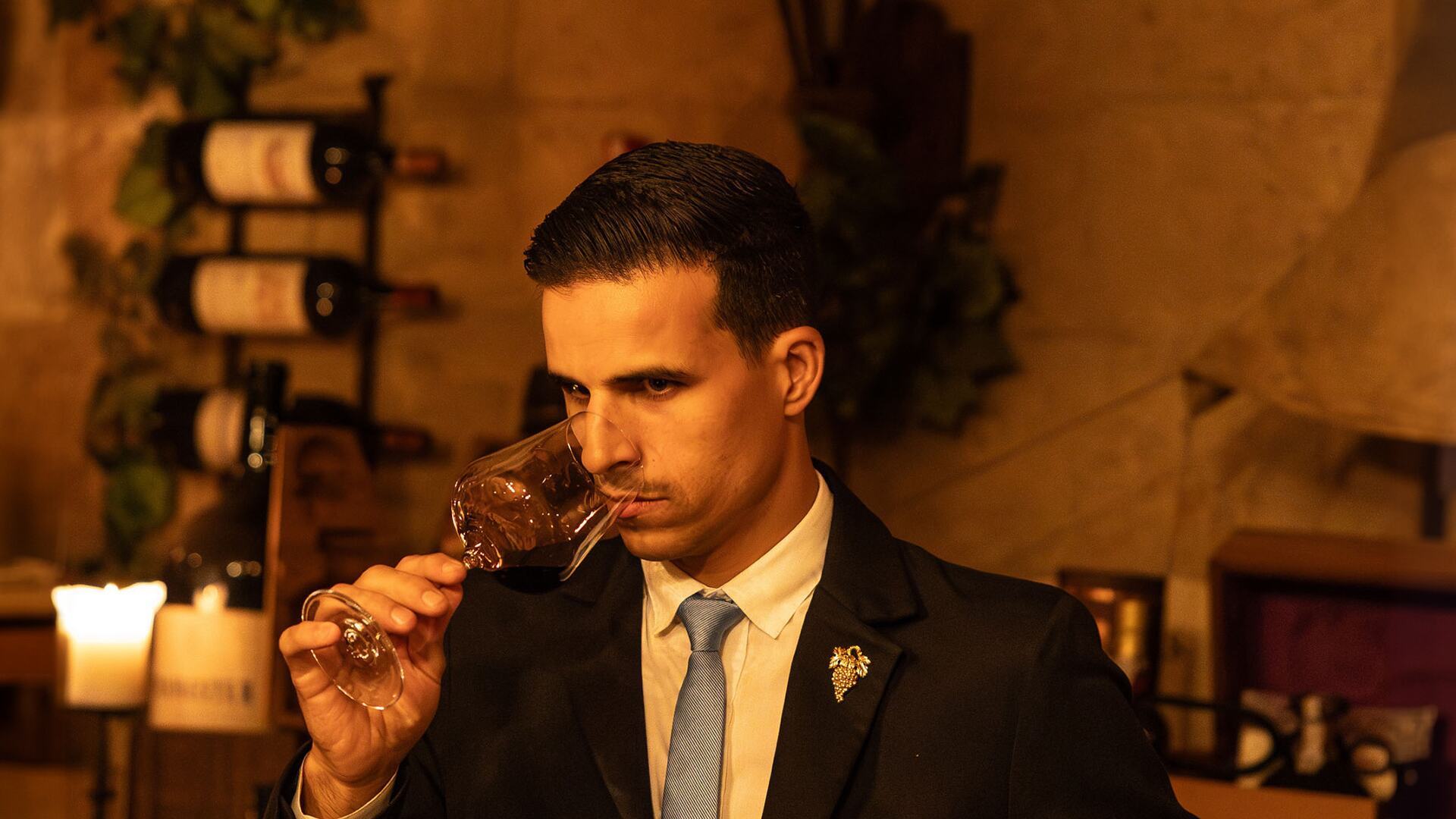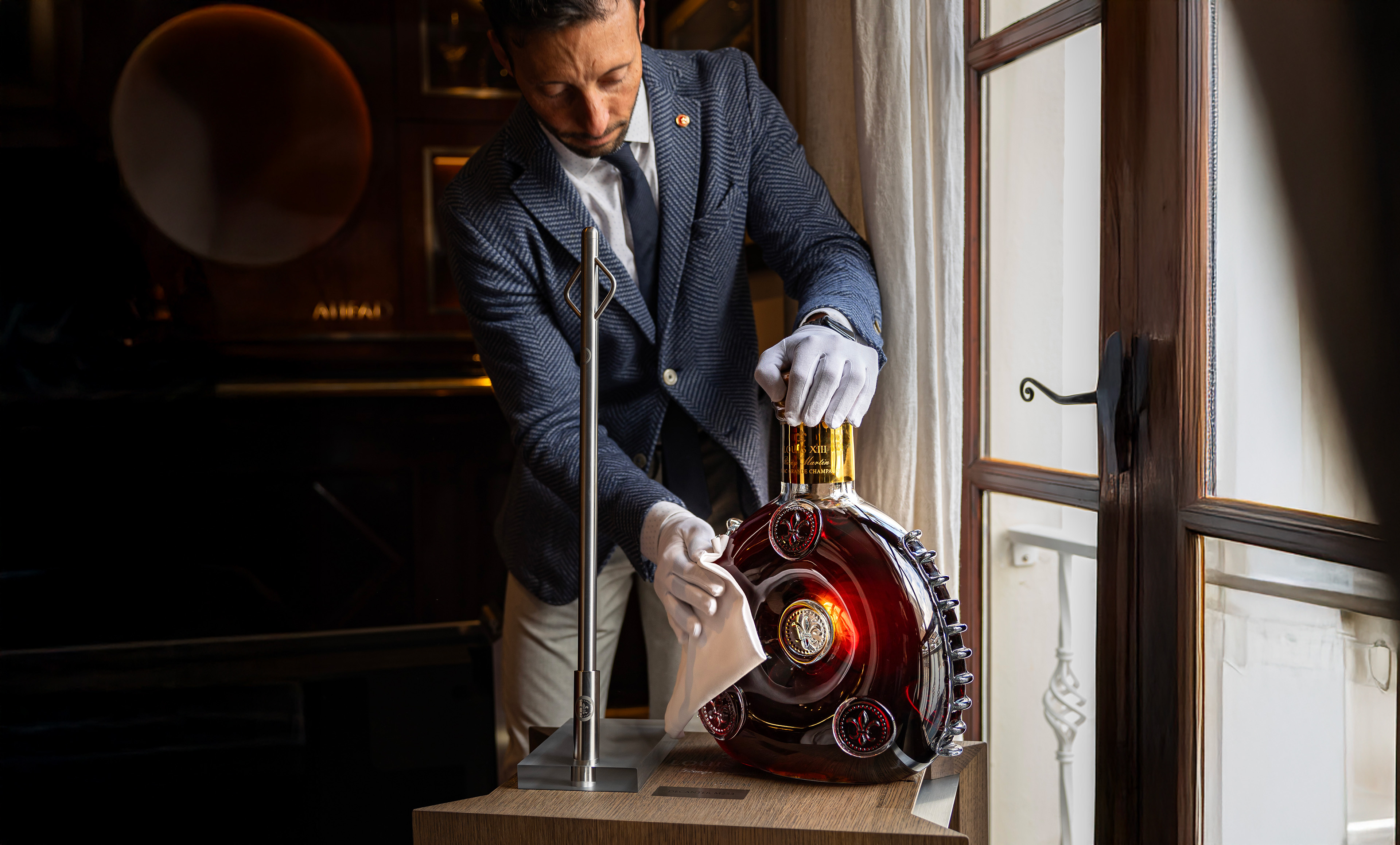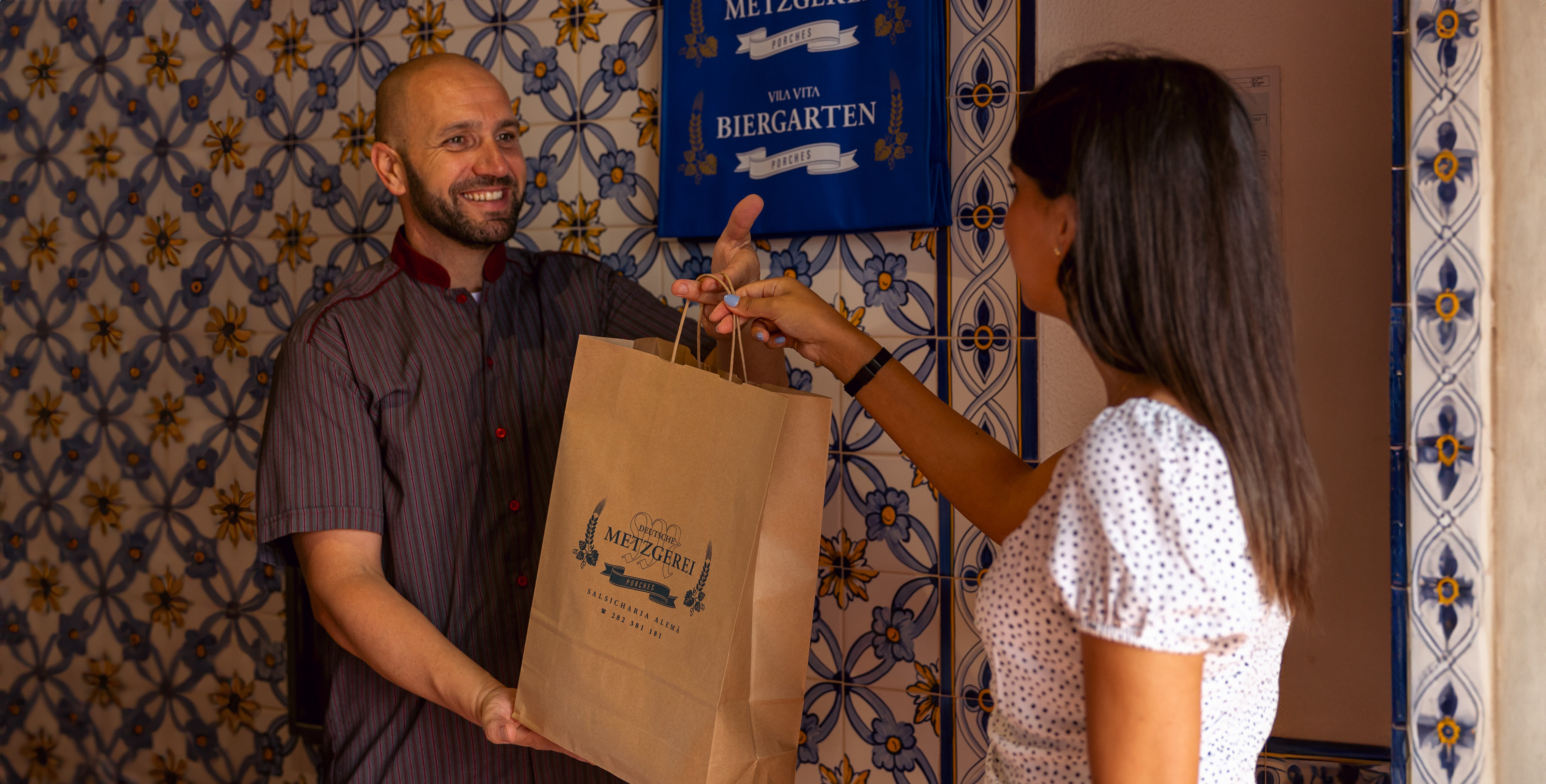
All in good taste
All in good taste
- Gastronomy
The wine cellar is found at the heart of Vila Vita Parc; hidden away behind ornate iron doors, it immediately captures the imagination. As Ricardo Rodrigues, its curator and head sommelier, explains, “The doorway is quite mysterious, so sometimes we have people curious, trying to see what we have down here!”
The cellar is buried over 8 meters underground, in an ancient water reservoir, and was rebuilt using recycled bricks and tiles well over 150 years old. As we descend the winding, candle-lit stairway, we can see carved bricks, a history of tradition written into the very walls of the cellar.
“We wanted to create something sustainable,” Ricardo continues, “but also something unique. It tells a story, like the best wines do. It reminds us of the aging process itself. This is a very special place, where we want to create something exclusive.”



Ricardo was given the task of doing so just over a year ago. Previously, he was the sommelier at Vila Vita Parc’s 2 Michelin star restaurant, Ocean, for five years. There, he had already begun to curate this spectacular stage for his curated wine experiences.
“This is a showcase of our passion for winemaking - at Vila Vita Parc we have over five thousand different wines, some served from our restaurants, while others can only be found here in the cellar. It is a unique collection; we have wines from very small productions, some that we are aging, some for our wine experiences, and some that we are not selling - at least for now!”
Being underground, the temperature is easy to control, and Ricardo watches over it with a keen eye, straightening and checking bottles as we pass the endless rows of stone shelves.
“Many years ago, I started looking after the wine collection at my first job, when my supervisor left, and that inspired my passion for wine. I wanted to learn more and more - the heritage, the traditions. This led me to travel. I worked in London; I went to Spain. I was lucky to work with some of Europe’s best sommeliers, it was the best schooling you could imagine. We learnt from each other's regions and cultures - and that taught me so much!”
Working in Michelin kitchens and member’s clubs alike, Ricardo acquired knowledge and experience in classical and contemporary wine culture, as well as how to expertly pair and carefully curate. Originally from the Algarve, he was proud to bring everything he had learnt as part of the team at Vila Vita Parc.


“Portuguese wine is of a really high quality, so the opportunity to come here and grow professionally was something I really wanted to do. I felt we had a chance to elevate what we had here even further, so what we did first in Ocean, I am doing now in the Wine Cellar - finding small producers, exclusive wines, supporting local vineyards. About 60% of our wines come from Portugal, so a part of our approach is to help grow the reputation of our wines, to tell the story of our winemaking heritage and what makes it so unique.”
Ricardo, since returning to Portugal, has seen a huge increase in quality, particularly in white wines. “We don’t produce enough nationally to compete with some of the biggest producing countries, but we can compete in terms of quality.”
“White wines really stepped up recently,” he notes, “and the rest of the world has taken notice. Our reputation may not always travel too far, but when people come here and taste for themselves, they see the quality. That’s a part of what we want to do here.”
“For many years, the focus here in the Algarve has been on red wines, but recently, more forward-thinking producers have adapted to changes in the weather and begun to harvest a little earlier. This reduced the sugar in the grapes and improved the quality of our white wines. They learnt to follow the season, not the schedule.”
Recently, Portuguese vineyards have committed to more sustainable methods, creating ecosystems and terroirs that reduce their environmental impact. “This is good for everybody,” Ricardo explains, “the quality of the wine improves, and they have a vineyard that will continue to grow for hundreds of years. In many ways, we are going back to simpler, more traditional ways to produce wine.”
The Wine Cellar itself is a treasure trove, filled with hundred-year-old port wines, rare vintage collections, limited productions, and private reserves. This is a journey through the story of winemaking, in Portugal and beyond.



Pointing out notable labels and years from Portuguese vineyards, like Barca Velha, Fojo, or Quinta do Vale Meão, Ricardo brings us to some of the jewels of the collection. A Kopke Port wine celebrating their 380-year history… “Only 380 were released and 24 can be found here.” Moving along, we find Tributa and AB Ports, from 1868 and 1888 respectively, and the Quinta da Manoella 5G, a Port dating back five generations. Taking center stage is a beautiful Grahams Cabinet, one of only 30 produced. “We were able to get two of these for the cellar: the vintages date back to 1961 and add up to 200 years - it includes the 2011, one of the best of all time.”
Ricardo enthusiastically describes that he loves to share his passion for winemaking with the guests, inspired by Portugal’s hundreds of years of history and tradition, a heritage he is rightly proud of.
“Our producers are moving away from using well-known, international grapes. João Clara, a local Algarve vineyard, has worked really hard to reintroduce Negra Mole, which is a traditional variety dating back over 2000 years.”
The Wine Cellar regularly hosts unique wine and food experiences. Through the year, Ricardo is hosting a fortified wine tasting covering 327 years of history, sampling 30-, 50-, and 80-year-old Ports, followed by a Madeira wine from 1968 and a trilogy of Moscatel from José Maria Fonseca, with an average age of 93.
Guests can explore the different grape varieties throughout Portugal in one tasting, tracing back the regional origins of Alvarinho, Vizinho, Alicante Bouschet, and Negra Mole, while another tasting showcases the wines produced by Vila Vita at the Herdade de Grous farm. And soon also from their new vineyard in the Algarve. “We are excited to see the first wines produced here, from the harvest in 2024.” Ricardo explains. “We tried the grapes when they were first harvested. They were so aromatic and fruity, that we are really looking forward to tasting the end-result.”
“Guests enjoy learning the story behind our wines, where they come from and who produced them. They want to hear about the Portuguese grapes, and that means that Portuguese winemakers now want to use our unique, local varieties. So, their knowledge helps preserve our heritage.”


“We have so much to offer here, if you go to the Douro Valley, you’ll find vineyards that go back 10 generations. The vinhas velhas (old vines) they grow there have been found to contain over 40 unique varieties! These are the stories we want to tell, to share with guests in our wine experiences. It’s a unique part of our history, and we should be proud of it.”
Explore our stories
Have you enjoyed what you've just read? Here are a few more stories for you to discover.

